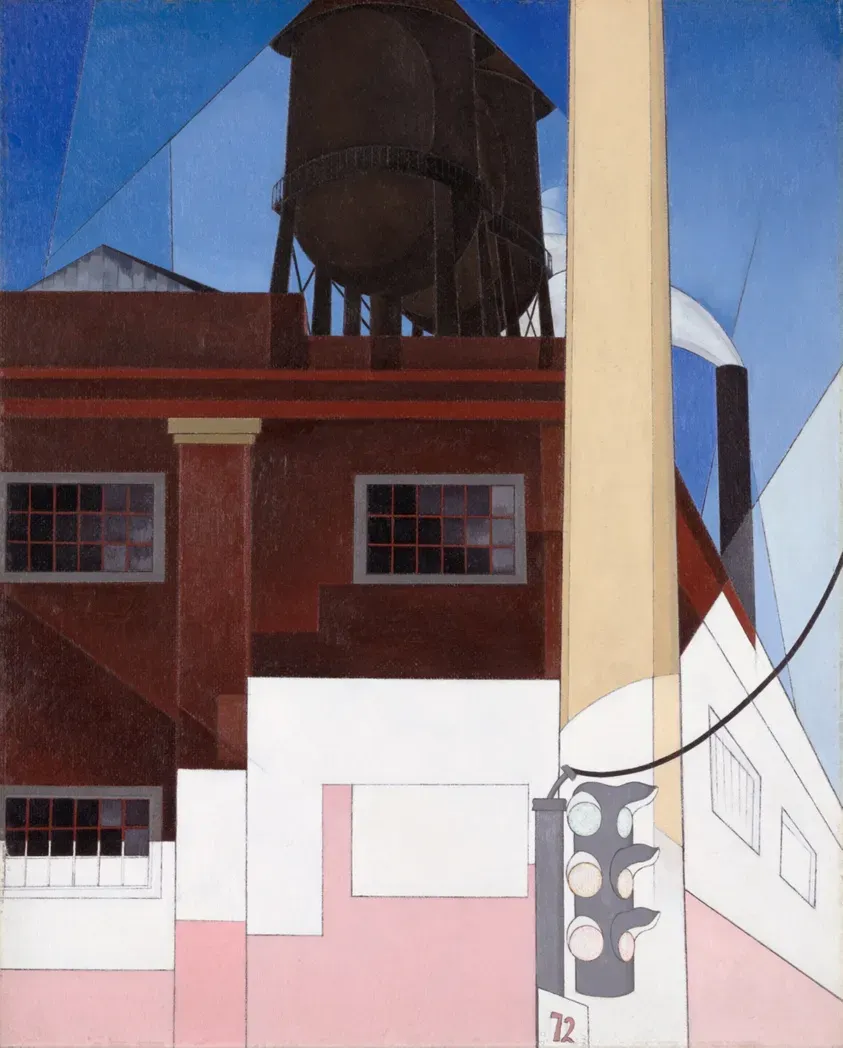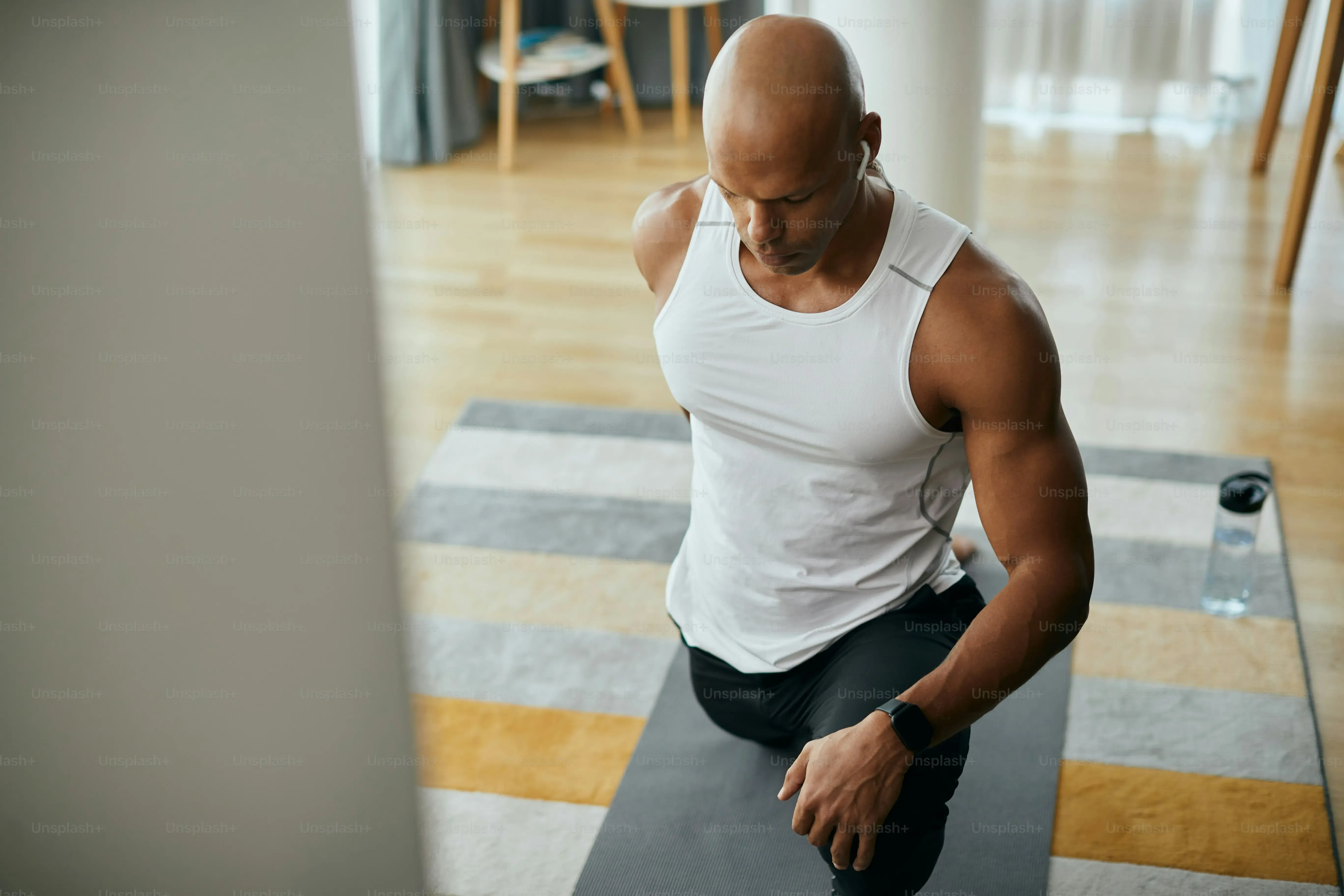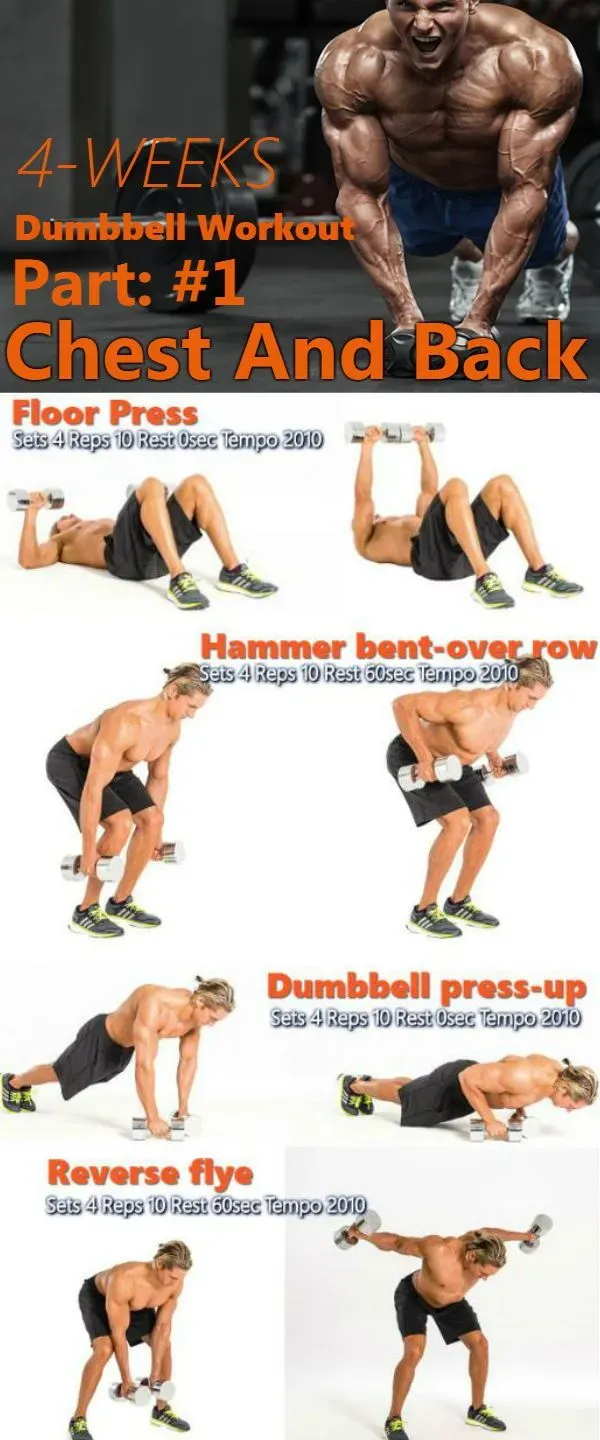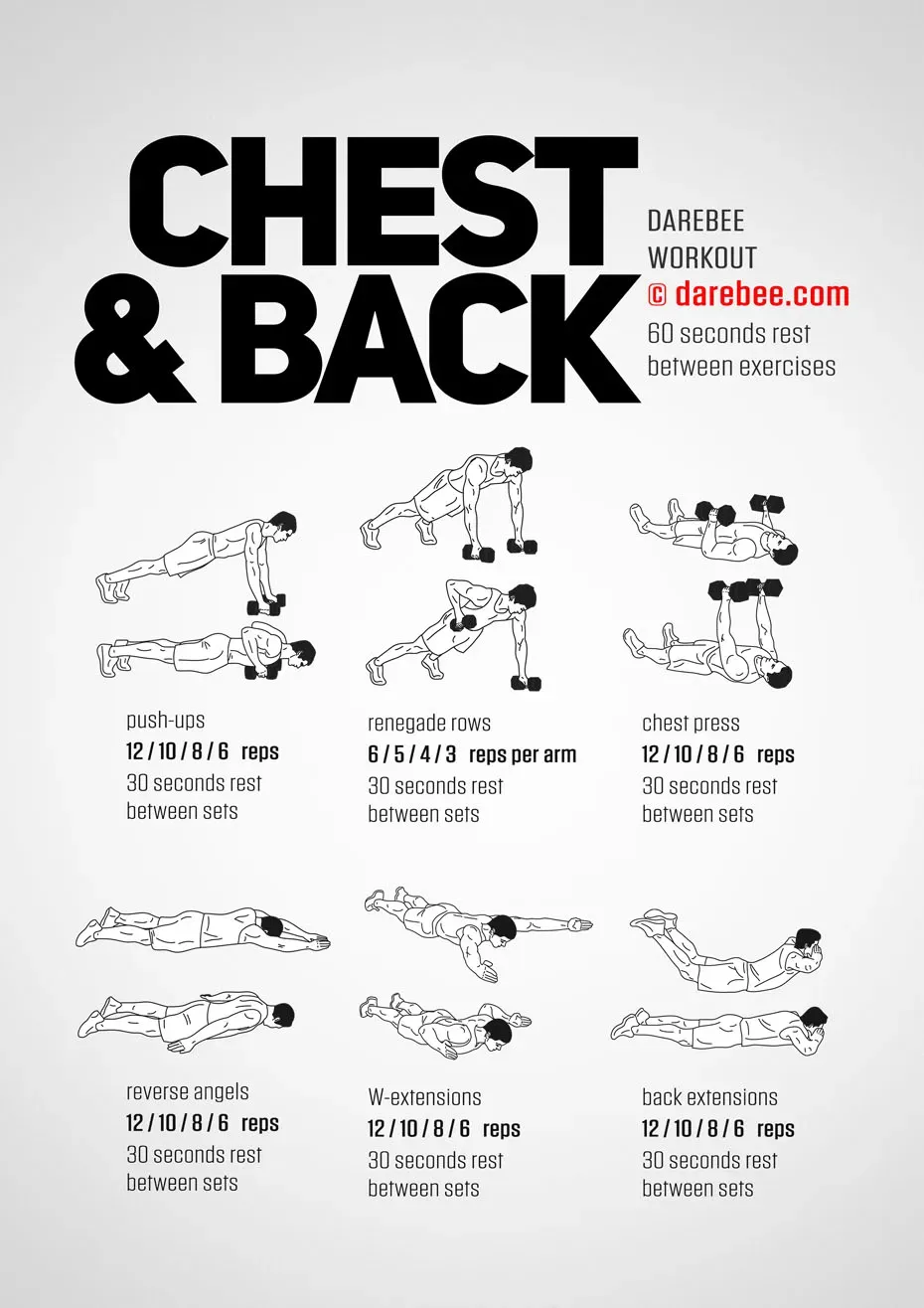Table of Contents
Tired of feeling like your upper body is an afterthought when you can't get to the gym? Maybe you've tried piecing together random push-ups and pull-ups but aren't seeing the results you want. Building a strong, balanced upper body – specifically your chest and back – feels pretty crucial, doesn't it? It's not just about looking good; it's about better posture, functional strength for everyday life, and frankly, just feeling capable.
Why Your Chest and Back Workout at Home Matters

Why Your Chest and Back Workout at Home Matters
More Than Just Show Muscles: The Balance Equation
Let's be real. Most people who start lifting, or even just thinking about it, usually focus on the chest. Bench press, push-ups, whatever. It's visible, it fills out a shirt, you get the idea. But neglecting your back while hammering your chest is like building a fancy house with a shaky foundation. You're setting yourself up for imbalances, rounded shoulders, and potentially some nagging pain down the road. A proper chest and back workout at home forces you to address both sides of your upper body, creating that crucial balance. Think of your chest as the push muscles and your back as the pull muscles. You need both working together efficiently.
Convenience Isn't Just a Perk, It's a Game Changer
Life gets busy. Work, family, that sudden urge to rewatch a classic movie marathon – things pop up. Getting to the gym becomes another hurdle. This is where an effective chest and back workout at home really shines. You eliminate travel time, gym crowds, and the excuse that you "just don't have time today." Five minutes between meetings? Knock out a quick set. Kids finally asleep? Squeeze in your workout. Consistency is key to seeing results, and making it easy to *actually do* your chest and back workout at home is half the battle won.
- Better posture (less slouching at your desk)
- Reduced risk of shoulder injuries
- Increased functional strength for lifting and carrying
- Improved overall upper body aesthetics
- Workout on your schedule, not the gym's
Building Your Perfect Chest and Back Workout at Home Routine

Building Your Perfect Chest and Back Workout at Home Routine
Start With the Basics: Assessing Your Starting Point
Alright, let's talk about building this thing from the ground up. Before you jump into any chest and back workout at home, you gotta figure out where you're starting. Can you do a single push-up with good form? How about a pull-up, or even hang from a bar for a few seconds? Be honest with yourself. It's not about judgment; it's about setting realistic goals. If you can't do a regular push-up yet, elevated push-ups (hands on a counter or chair) are your starting line. Can't do a pull-up? Inverted rows under a sturdy table or using resistance bands are your entry point. Knowing your baseline dictates the exercises you pick and how you'll progress. Jumping into exercises you're not ready for is a fast track to frustration or injury.
Consistency Trumps Intensity (Especially Early On)
Look, it's exciting to start a new chest and back workout at home, and you might feel tempted to go all out every single day. Resist that urge. Consistency is your best friend here. Aim for 2-3 sessions per week that target your chest and back. This gives your muscles time to recover and rebuild stronger. Trying to do too much too soon leads to burnout and makes sticking to the routine much harder. Think of it like showing up for work consistently versus pulling one all-nighter and then sleeping for two days. The consistent effort builds results over time for your home chest and back work.
- Assess your current strength levels (push-ups, rows, hangs).
- Identify available equipment (bodyweight, bands, dumbbells, pull-up bar).
- Determine your schedule (how many days per week can you commit?).
- Set realistic, achievable goals.
- Plan for progressive overload (how will you make it harder over time?).
Listen to Your Body: Recovery is Non-Negotiable
You'll hear this everywhere, but it's worth repeating: pay attention to what your body is telling you during your chest and back workout at home. Soreness is normal, but sharp pain is a stop sign. Pushing through pain is dumb, not tough. It's how you get injured and derail all your progress. Make sure you're getting enough sleep and fueling your body properly. Those muscles don't grow while you're working out; they grow when you're resting and recovering. Skipping rest days or skimping on sleep undermines all the hard work you're putting in. Recovery is just as much a part of your chest and back workout at home as the exercises themselves.
Essential Exercises for Your Chest and Back Workout at Home

Essential Exercises for Your Chest and Back Workout at Home
Essential Exercises for Your Chest and Back Workout at Home
so you've assessed where you're at and committed to consistency. Now comes the fun part: picking the actual moves for your chest and back workout at home. Forget the fancy machines; the most effective home exercises rely on fundamental movement patterns – pushing and pulling. Bodyweight is king here because it's always available. Think push-ups in their various forms for chest and triceps, and some kind of rowing or pulling motion for your back and biceps. Don't overcomplicate it. Start with the basics you can perform correctly, then worry about adding complexity or resistance later. The goal is to build a solid foundation with moves you can master and safely push yourself on over time.
Putting It Together: A Sample Chest and Back Workout at Home Plan

Putting It Together: A Sample Chest and Back Workout at Home Plan
Structuring Your Weekly Grind
so you know *why* you need to hit both chest and back, you've assessed your starting point, and you're ready to commit. Now, how do you actually schedule this thing? For a solid chest and back workout at home, consistency is king, remember? Aim for two or three sessions per week. You could do a full upper body day hitting both, or split them up if you prefer, maybe chest focus one day and back focus another, but hitting them together is efficient and reinforces that push-pull balance. The key is to find a schedule that fits *your* life and stick to it. Don't try to copy some influencer's seven-day-a-week grind if you can realistically only manage three.
Building the Session: Exercise Pairings
When you're doing a chest and back workout at home, think about pairing exercises that work opposing muscle groups. This is efficient and helps maintain balance. For example, you could pair push-ups (chest) with inverted rows (back). While one muscle group works, the other rests, allowing you to get more work done in less time. Another approach is to do all your chest exercises first, then move to back. Whatever structure you choose, focus on quality over quantity. Nail the form on each rep. Don't just rush through it to get it over with. That's how you cheat yourself out of results and invite injuries.
Exercise Pair (Example) | Target Muscles | Home Variation |
|---|---|---|
Push-ups | Chest, Triceps, Shoulders | Standard, Elevated, Knee |
Rows | Upper Back, Biceps | Inverted Rows (under table), Band Pull-Aparts, Dumbbell Rows |
Dips | Triceps, Chest, Shoulders | Chair Dips |
Pull-ups | Back, Biceps | Assisted (band/chair), Negative Pull-ups, Lat Pulldowns (band) |
Progression: Making it Harder (Because it Needs To Be)
Your body is annoyingly good at adapting. If you keep doing the exact same chest and back workout at home week after week, you'll eventually stop seeing progress. This is where progressive overload comes in. It just means making the exercise harder over time. This could be doing more reps, doing more sets, using a harder variation of the exercise (like going from knee push-ups to standard push-ups), decreasing rest time between sets, or adding external resistance if you have it (like a backpack filled with books for push-ups or holding dumbbells for rows). Track your progress so you know when and how to increase the challenge. Stagnation is the enemy of gains.
Troubleshooting Your Chest and Back Workout at Home: Common Issues
Troubleshooting Your Chest and Back Workout at Home: Common Issues
so you've started your chest and back workout at home, you're feeling good, but then you hit a wall. Maybe you're not seeing progress anymore, maybe your shoulders are complaining, or maybe you just feel like you're doing the same old thing. This is totally normal. Home workouts, while convenient, present their own set of challenges. You might lack the heavy weights of a gym, or you might not have someone there to check your form. Don't let these roadblocks derail your efforts. Most common issues with a chest and back workout at home have straightforward fixes if you know what to look for.
Hitting a plateau? It's probably time to switch things up. Your body adapts, remember? If you've been doing the same number of push-ups and rows for weeks, it's time for progressive overload. Add reps, add sets, try a harder variation, or slow down the tempo of your reps. If form feels off, grab your phone and record yourself. Seriously. Watching yourself perform exercises is an eye-opener and way better than guessing if your back is straight during rows or if your chest is actually touching the floor during push-ups. Pain is different from soreness; if something sharp or persistent pops up, stop and figure out why before pushing through it.
"The only bad workout is the one that didn't happen." - Said by someone who probably hadn't tried doing burpees after pizza.
Making Your Home Chest and Back Gains Stick
So, there you have it. Building a solid chest and back with nothing more than your living room floor and maybe a few dumbbells isn't just theoretical; it's entirely achievable. You've seen why hitting these muscle groups together makes sense, how to pick the right exercises, and got a blueprint to follow. The real trick now is showing up consistently. It won't always feel easy, and progress might look more like a steady climb than a rocket launch. But stick with the plan, focus on form over reps, and you'll build a stronger, more capable upper body right where you are. No fancy gym membership required.
